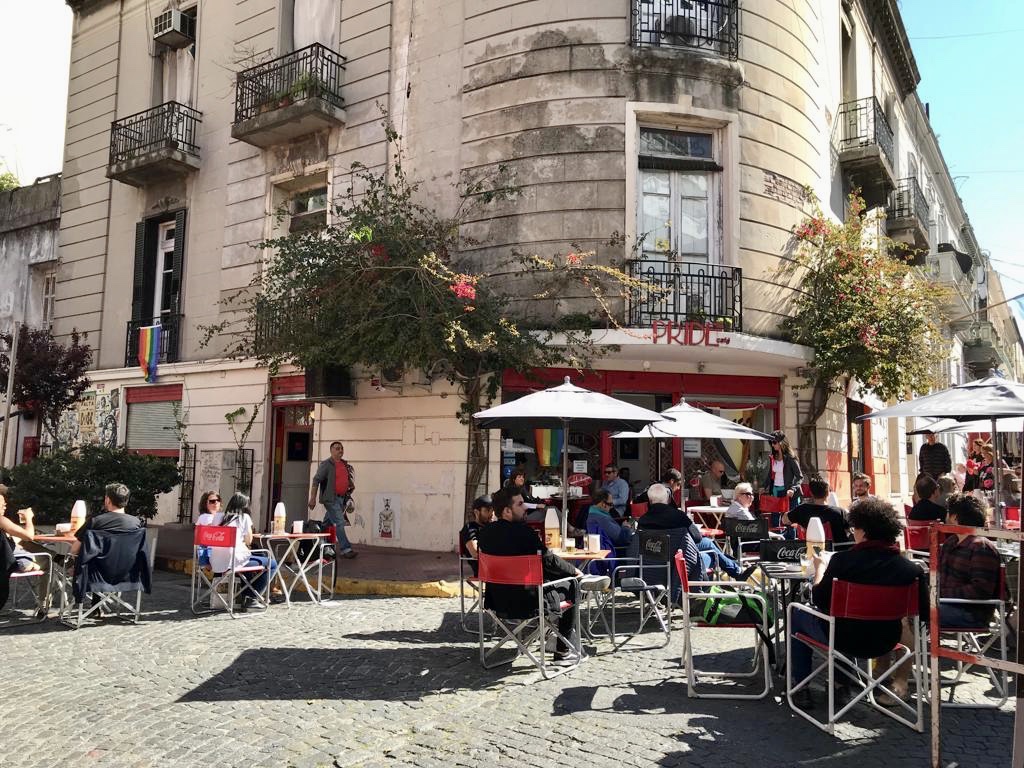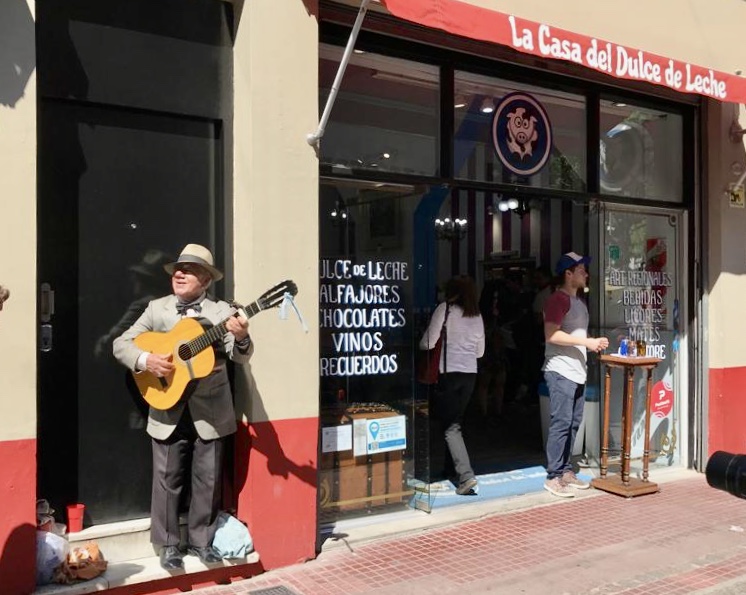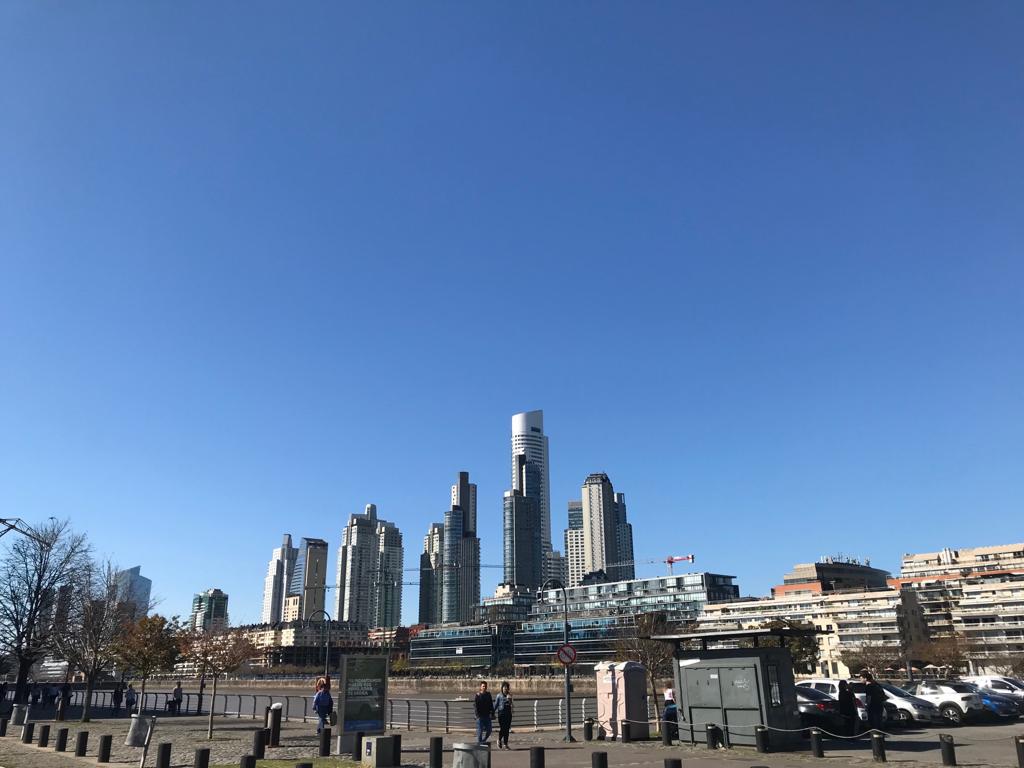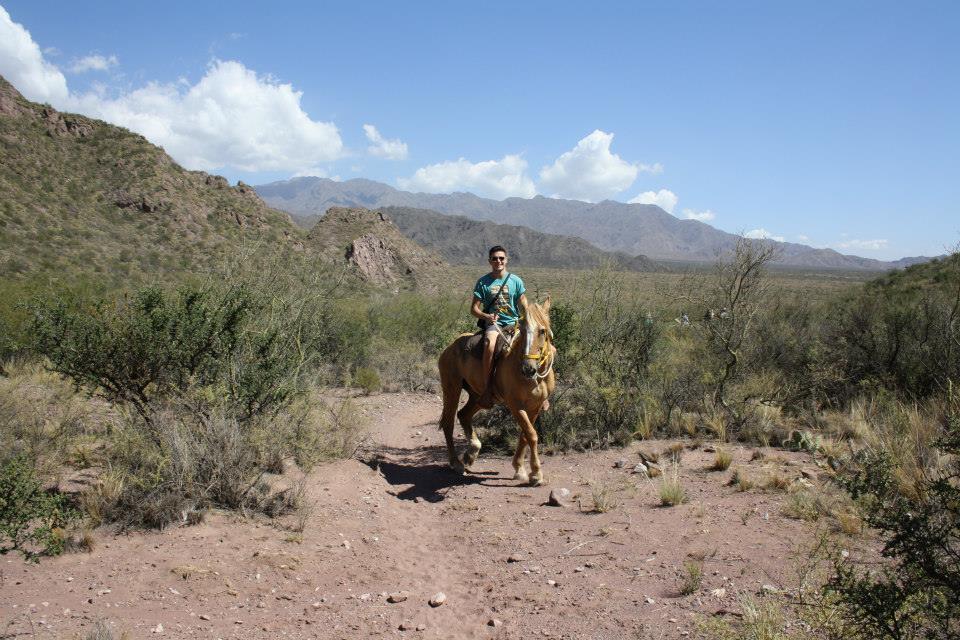Learning Spanish in Argentina Was Key to My Fluency – Here’s Why
When it comes to learning a foreign language quickly, there are few methods greater than genuine cultural immersion.
Not only does integration into a new society provide a broad range of cultural insights, but it can also create long-lasting friendships and connections.
I am fortunate enough to have experienced this personally, having spent a year living and working in Argentina’s magnificent capital, Buenos Aires.
Despite three years studying the Spanish language scrupulously in lecture theatres, seminar rooms and libraries whilst at university, it was my period of residence in Argentina which enabled me to progress my Spanish at a truly rapid rate.
This article is a summary of my time in Argentina and, as I see it, proof that cultural immersion is so incredibly beneficial when it comes to language progression.

How learning Argentine Spanish Helped Me Improve My Language Skills – Let’s Talk About Grammar Differences
Admittedly, when I arrived in Argentina, I already had an intermediate level of Spanish. I had spent many weeks conversing with locals in Spain, and I had several Spanish friends at university in London. The inability to communicate in such a way upon arrival in Argentina, therefore, left me shocked and slightly perplexed.
It’s not that I expected the Spanish grammar I had learnt in school to be adopted by Spanish-speaking countries the world over — I suppose I’d never given it much thought. In hindsight, perhaps this was ignorant.
However, I had never been to a Spanish-speaking country outside of Spain before. So, Castilian Spanish (the Spanish spoken in most of mainland Spain) was all I really knew.
Anybody who has been to Argentina will know that Argentine Spanish is unique, and I found out the hard way.
In the present tense, Argentine verb conjugation is different from the majority of Spanish-speaking countries; the country adopts the voseo form, which comprises an accent on the final vowel of the conjugated form in the ‘you’ singular form.
Furthermore, the personal pronoun tú is replaced by vos and the conjugated eres is replaced by sos.
An example of this in practice with each verb group is as follows:
- tú tomas (“you take”) becomes vos tomás – AR verb
- tú tienes (“you have”) becomes vos tenés – ER verb
- tú vives (“you live”) becomes vos vivís – IR verb
Firstly, you’ll notice that the verb tener maintains its stem and does not change to tienes. This is true of all stem changing verbs in the present tense in Argentine Spanish.
Secondly, there is an accent on the final vowel of each conjugation. As you’d expect, this alters the stress of the word and, as a result, the pronunciation is altered drastically.
This is symbolic of Argentine Spanish intonation in general, which I’ll cover in greater depth shortly.

How I Found Out These Differences the Hard Way
My first experience struggling with the main grammar differences in Argentina came upon arrival, when the receptionist at my hostel asked me:
¿Sos inglés? (“Are you English?”) and Qué edad tenés? (“How old are you?”)
This differs greatly to the phrases I had learnt in school: ¿Eres inglés? and ¿Cuántos años tienes?
Imagine the surprise when I stared back at her, mildly bemused, trying to figure out whether I had misheard the question.
This was, in fact, my first experience listening to, and indeed hearing, the voseo.
Soon after my arrival, I started my work placement at an international car rental company, and was asked initially by colleagues, ¿Vos vivís acá en Buenos Aires? (“Do you live in Buenos Aires?”)
Again, this left me blank-faced, frozen and unable to respond instantaneously, as I had become so used to doing in Spain.
I was waiting to be asked ¿Vives aquí en Buenos Aires?
Clearly, understanding one of these phrases by no means makes the other intelligible!
I was only a few weeks into my time in Argentina and I was yet to learn the voseo form, or any nuances and differences between South American Spanish vocabulary and European Spanish.
Acá, meaning here, is an example of this. If you speak Spanish, you’ll know that throughout almost all parts of Spain the word aquí is used instead of acá to say “here”.
I was shown other, more drastic examples of vocabulary differences during my time at work in Buenos Aires. I’ll never forget one of these in particular. An Argentine colleague asked me how I travelled to work, to which I replied:
Cogí el autobús (“I caught the bus”), using the past tense of the verb coger (“to catch”).
In Argentina, and throughout other parts of South America, the verb coger is used only as a derogatory term. Without going into too much detail, I had just told my colleague that I had experienced a sexual encounter with a bus!
This example, in particular, highlights just how drastically different Argentine Spanish, and indeed Latin American Spanish in general, can be from European Spanish.

I Learnt that Argentina’s Unique Vocabulary Is a Part of Life
As you’d expect, each Spanish-speaking country has its own unique set of national and regional vocabulary and colloquialisms. Argentina is no exception to this rule.
I’ve had the privilege of visiting many Spanish-speaking countries, but I am yet to find one in which local slang dominates the lexicon to an extent as great as in Argentina.
Learning new words became a daily challenge. I knew that to stand any chance of fitting in and to avoid sticking out like a sore thumb, I would need to learn vocabulary local not solely to Argentina as a whole, but also to the Greater Buenos Aires area.
It became apparent to me that Argentina’s unique vocabulary is a part of life. The most basic of tasks, such as purchasing fruit or juice at a local kiosk, requires knowledge of Argentina’s unique names for these items, none of which I knew existed!
Look at the Argentine Spanish words below, which bear no resemblance to their European Spanish counterparts!
| ENG | ESP | ARG |
|---|---|---|
| strawberry | fresa | frutilla |
| juice | zumo | jugo |
| banana | plátano | banana |
| avocado | aguacate | palta |
I even struggled (very briefly) to purchase a phone at the local shop, unaware that the word móvil is nonexistent in Argentina in this context, replaced instead by celular.
These are just a few examples, but the list of words unique to Argentina or South America which differ to European Spanish is, quite literally, endless.
Below are others I encountered during the early stages of my time in Buenos Aires:
| ENG | ESP | ARG |
|---|---|---|
| car | coche | auto |
| pen | bolígrafo | birome |
| to drive | conducir | manejar |
| bus | autobús | colectivo/cole |
| t-shirt | camiseta | remera |

The Intonation of Argentine Spanish Taught Me the History of Argentina’s Cultural Heritage
Not long after arriving in Argentina, I noticed that the intonation of Argentine Spanish resembles that of Italian far more than that of Spanish of any other Spanish-speaking country.
To me, it was fascinating to listen to an accent and sound that I had never encountered before. Listening to Argentine, and indeed Uruguayan Spanish, is like listening to a song. The intonation flutters upwards and downwards, in contrast to Spain’s much more monotonous intonation.
Understanding the main reasons for this intonation enables us also to understand a great deal about Argentina’s history.
Argentine Spanish is often referred to as Rioplatense Spanish, a dialect from the Rio de la Plata region, which resides between Argentina and Uruguay.
Although this region was conquered by Spain, it later received an influx of migration from Italy. In the late 1800s and early 1900s, almost half a million Italians (which accounted for more than half of all migrants) arrived in Argentina in search of work.
As a result of this period, more than 70% of Argentinians today are of Italian descent. It’s not surprising, then, that Argentine Spanish is often described as a combination of Spanish and Italian.
Whilst I did not adopt this accent during my time in Argentina, it certainly stuck with me and I thoroughly enjoy listening to it through film, radio or when conversing with friends.

Spanish School in Buenos Aires: Is Learning Spanish This Way Necessary?
There is no question that learning Spanish in a language school brings multiple benefits, particularly when you’re spending time abroad.
My friends in Europe had opted to spend their year abroad at a partner university in Spain, and many of the Western friends I made in Buenos Aires were studying Spanish at the local Spanish school in San Telmo, opting for daily classes each morning to progress from beginner level.
I am definitely not opposed to this style of learning. In fact, I’m actually a strong advocate of it. After all, I opted for the same method when I learnt French more recently whilst living in Paris, and I would love to learn Japanese or Chinese this way too.
Learning a language in a school brings benefits beyond (sometimes) quality teaching and thorough grammar explanations.
For a start, it’s a great way to meet new people. Moving abroad can be a daunting experience; language schools enable you to immerse yourself in the country of the target language a little more gently, meet like-minded individuals and create a social bubble.
However, I don’t believe it is necessary to learn Spanish in this traditional way, particularly if you already have some knowledge of the language.

Why It Is No Longer Necessary to Learn Spanish in This Traditional Way — And What to Do Instead
Allow me to explain. When it comes to learning languages abroad, there are obvious benefits to learning in a language school (as mentioned above).
However, moving abroad provides other opportunities. Depending on your professional goals, it is worth searching for work experience in order to immerse yourself fully on a daily basis, gaining valuable skill sets in the process.
Of course, this option is not for everybody, but working whilst on a period of residence abroad provides you with work experience, demonstrates to future employers that you have worked in an international environment and highlights your ability to speak a foreign language in a professional context.
There is, of course, a great difference between being able to ‘get by’ in a language and use it in a professional context.
During my stay in Argentina, I worked for a multinational company, albeit in a very junior position. Doing so enabled me to develop an understanding of work-life in the region and, more importantly, to obtain a high level of fluency in business Spanish.
This option is only feasible if you already have a relatively high level in the target language upon arrival. If you do, I would argue that this is more valuable than the experience a school can provide.
How I Used Free Time to Develop My Spanish
When spending time in Spain or South America, there are a number of ways to develop your Spanish, even when you are not working or studying.
During my time in Argentina, I was able to do so a great deal by taking full advantage of the country’s most valued pastimes.
This included:
- visiting Argentina’s world famous food outlets – including the Argentine parrilla,
- joining a local football team (which is more within the realms of my physical capability than tango),
- and visiting various wonderful parts of the country outside of Buenos Aires.
Unbeknownst to me at the time, all of these social situations exposed me to new vocabulary, regional dialects and colloquialisms, none of which would have been achieved via a more academic route.

My Linguistic Progression in Spanish After 6 Months in Argentina: I Reached Fluency
Apparent to me upon my return home after my year in Argentina was the unquestionable progression I had made in Spanish. I had gone from being able to converse about a wide range of topics with relative fluency, to being totally fluent, or as fluent as I could have been under the circumstances.
It is said that once you can understand Argentinian Spanish, you can understand almost any Spanish. That said, anybody who has visited Cuba may disagree!
Certainly, after spending most of the year in Buenos Aires, I found Castilian Spanish much easier to understand upon return. I no longer required Spanish subtitles with films, and rarely needed to look up vocabulary in Spanish news articles. Everything had become easier to understand.
As I have iterated throughout this post, I put this progression down to cultural immersion, and the linguistic immersion that results from it. I do not believe that spending my period of residence abroad in a university would have brought me the same results and I am forever grateful for the work and social experiences I gained in Buenos Aires.
Today, I use fluency in Spanish in my everyday life, both professionally and socially. I have been able to travel to many countries in a role that I was only able to obtain due to my ability to speak a foreign language, and made friends from all over the world along the way.
Whilst there are many ways to learn a language, there are few which provide true cultural and linguistic immersion. For this reason, once you have developed some knowledge of Spanish, I cannot recommend moving to a Spanish-speaking country enough.





Social